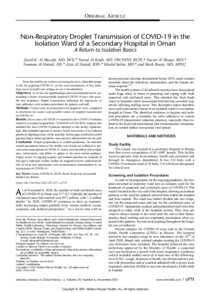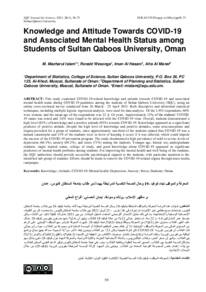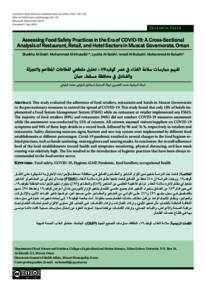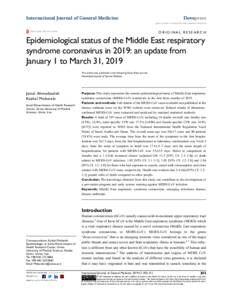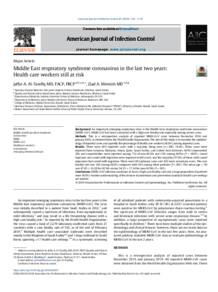Document
Non-respiratory droplet transmission of COVID-19 in the isolation ward of a secondary hospital in Oman: a return to isolation basics.
Identifier
DOI: 10.1097/IPC.0000000000001022
Source
Infectious Diseases in Clinical Practice. v. 29, 6, 1, p. E371-E375
Contributors
Al-Kindiyah, Nawal., Author
Al-Shaqsi, Nasser., Author
Al-Hattaliyah, Noaman., Author
Al-Hattaliyah, Azza , Author
Salim, Khalid., Author
Beatty, Mark., Author
Country
United States.
City
Philadelphia
Publisher
Lippincott Williams and Wilkins.
Gregorian
2021-11-01
Language
English
Subject
English abstract
Front-line health care workers are among the most vulnerable groups at risk for acquiring COVID-19, yet the exact mechanisms of how infections occur in health care settings are yet to be identified. Objectives To review the epidemiologic and environmental factors surrounding a cluster of nosocomially acquired COVID-19 cases with possible non respiratory droplet transmission indicating the importance of strict adherence with isolation procedures for patients and staff. Methods Contact and environmental investigations were completed to determine the source and possible routes of hospital transmission of COVID-19. Results Seven cases of COVID-19 occurred in the COVID-19 isolation ward of a secondary hospital from 12/04/2020 to 01/05/2020. Analysis also included first four COVID-19 patients admitted to this facility. Epidemiologic links included exposure to massive bowel movements of two infected patients in adjoining rooms on the same day. Serious gaps in infection control practices lead to further spread the virus and cross infection between the staff. Conclusion Despite preparedness to combat pandemics, the infection control precautions taken at this facility were found not sufficient to prevent nosocomial spread of COVID-19. Issues were identified with compliance, enforcement, and failure to update to the most current guidance. Urgent review of ongoing hygiene and isolation practices in hospitals of this type is indicated. Further studies are required to better understand the role of fecal oral transmission and environmental contamination in the transmission of COVID-19.
ISSN
1056-9103
Category
Journal articles

